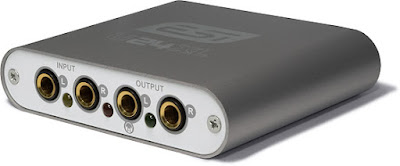UK-based Abbingdon Music Research's CD-77 is probably the most advance and elaborate CD/DAC that is based on the vintage Philips TDA1541A chip, considered by some - the absolute best DAC chip ever made.
The unit comes with several different sampling approaches from AMR's proprietary Digital Master non-over-sampling filter to oversampling to upsampling, which are user-selectable. Digital Master I and Digital Master II were developed by AMR and are exclusive to the CD-77 and its brother CD-777.
All internal clocks are synchronized to the exceptional military-grade temperature compensated master clock module to avoid the creation of unwanted beat frequencies, reduce overall digital noise and resultant jitter. The CD-77's OptiReg® digital power supply circuit has 14 specifically designed regulators, most of which are two or three-stage. Its transport mechanism is an in-house design based on the high-precision, reliable Sony K-series laser pickup mated to the musical Phillips CD-18 servo system along with a proprietary high-torque direct-drive motor. This is all housed in a very substantial CNC machined aluminium CD well with an extra-stable CD spindle and a CNC machined aluminium CD clamp.

CD-77's power supply transformers have been designed in-house and are individually hand-made. They are some of the most advanced double C-Core transformers available. AMR claims that they surpass even the impressive R-Core transformers used in many high-end components and comprehensively outclass traditional EI and toroidal transformers used in many peer group products.
Other high quality parts including Ultra High Speed RF, military-grade design printed circuit boards, German-made premium film capacitors, AMR's own power supply polypropylene film Music Capacitors, zero noise schottky rectifiers and FEP Teflon insulated cable with silver-plate copper conductors for chassis wiring.

OptiBus® USB digital input accesses the vast library of music from a computer, allowing it to be enjoyed to a far higher level than conventional personal computer audio systems. OptiValve® analogue stage is a thermionic electron valve circuit. Using no negative feedback, with high gain, very low distortion and low output impedance together with new old stock thermionic electron tubes.
Specifications
Operation modes:
- Direct Master I; no digital or analogue filter
- Direct Master II; no digital filter, anti-sin(x)/(x) analogue filter
- Oversampling 2X, 4x
- Upsampling 96KHz, 192KHz (
I am at a loss to understand why, since TDA1541 only does 16-bit/44kHz TDA1541A can accept sampling rates of up to 192kHz - 8x oversampling from 48kHz base data - without problems, albeit at 16bits resolution)
Digital Audio Inputs:
- 1 x USB interface, 1 X S/P-DIF Interface (optional)
Analog Outputs:
- 1 x RCA; 1 x XLR per channel
Digital Outputs::
- 1 X S/P-DIF Interface (optional)
Thermionic Electron Valves:
- ECC81/12AT7 (NOS): amplification stage
- 5687/6900 (NOS): output buffer stage
- EZ80/6CA4 (NOS): rectifier stage
How about the price? If you have to ask - you probably can't afford it.




































